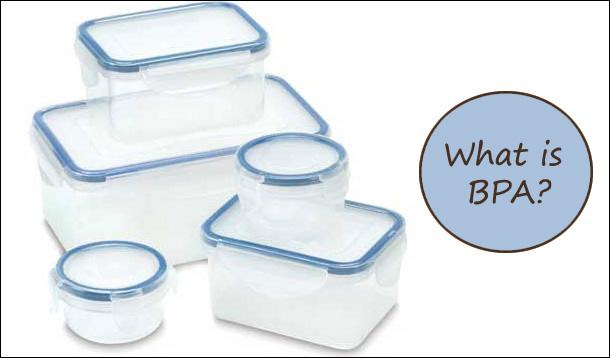
I know I’m not providing you with breaking news, you already know you are supposed to avoid Bisphenol-A (BPA), right? Maybe you think BPA is not that big of an issue, or maybe you already try to stay away from it, but you aren’t sure exactly why. That is the purpose of this post—I think it’s important for everyone to understand what BPA is and why it should be avoided.
BPA became a household name back in 2008 when Health Canada made the decision to ban it from all baby bottles being imported into and sold in Canada. Since that time, Health Canada has also declared BPA a toxic substance, with good reason. Here is what you need to know:
BPA is a chemical ingredient found in some plastics and resins. It’s a synthetic hormone that mimics estrogen in our bodies—it was actually tested as a hormone replacement in the 1930s (what?!). Manufacturers have been using it for decades (since 1957), so you can imagine all of the BPA-containing products that have been made since then. It is used to make baby bottles, water bottles, cars, toys, cell phones, computers, food containers—the list goes on and on.
As you can see, BPA is everywhere, so we all have some trace of it in our bodies (it was detected in 91% of the subjects in a Canadian test group). We can try our best to avoid it, but its use is so widespread, we’d have to live our entire lives in a cave to fully steer clear. Some items are easy to avoid, but unfortunately, some aren’t. Did you know that store receipts contain BPA?
In adults, BPA exposure has been shown to increase the risk of breast cancer, liver problems, obesity, heart disease, diabetes—just to name a few. In young children (including fetuses), it is also linked to a long list of issues including brain problems, early puberty, and impaired learning.
As I’ve said above, sadly, it is hard to totally avoid since it is found in so many things we come into contact with on a daily basis. But that does not mean you can’t do your best to stay away because the less exposure, the better.
![]() Avoid plastic – BPA makes plastic transparent, strong, and durable—everything that makes it a great material for manufacturers to work with. Think about all the plastic products you use each day, such as food containers, water bottles, packaged foods—how many of these things can you replace with a safer alternative? Some safe substitutes to consider are stainless steel, glass, cardboard, and ceramic.
Avoid plastic – BPA makes plastic transparent, strong, and durable—everything that makes it a great material for manufacturers to work with. Think about all the plastic products you use each day, such as food containers, water bottles, packaged foods—how many of these things can you replace with a safer alternative? Some safe substitutes to consider are stainless steel, glass, cardboard, and ceramic.
Though avoiding plastic will reduce your exposure, all plastics labeled BPA-free, may not be as safe as we think, so buying a plastic product labeled BPA-free may not be as simple as it seems.
Avoiding all types of plastic, whether it contains BPA or not, is healthier for you and for the environment. Once disposed of, the majority of plastic products do not break down will sit in a landfill forever. It is said that every piece of plastic ever made still exists today. Wow.
![]() Don’t microwave plastic – Any plastic container that carries the #7, #3, or #6 symbol should never be used in a microwave. When these plastics are heated, BPA is released. Manufacturers are not required to say whether or not their product contains BPA, so when it comes to heating plastic (washing in the dishwasher included), better safe than sorry. Personally, I would never microwave plastic no matter what symbol it carries; I would always use glass or ceramic/stoneware dishes.
Don’t microwave plastic – Any plastic container that carries the #7, #3, or #6 symbol should never be used in a microwave. When these plastics are heated, BPA is released. Manufacturers are not required to say whether or not their product contains BPA, so when it comes to heating plastic (washing in the dishwasher included), better safe than sorry. Personally, I would never microwave plastic no matter what symbol it carries; I would always use glass or ceramic/stoneware dishes.
![]() Avoid canned products – BPA is found in the lining of most cans in order to create a protective shield between the food/drink and the can’s metal. Of course, there may be certain times when you need to use a canned product. When such an occasion arises, always buy a brand that is labeled BPA-free. For canned drinks such as soda, choose the glass-bottled option over cans.
Avoid canned products – BPA is found in the lining of most cans in order to create a protective shield between the food/drink and the can’s metal. Of course, there may be certain times when you need to use a canned product. When such an occasion arises, always buy a brand that is labeled BPA-free. For canned drinks such as soda, choose the glass-bottled option over cans.
Do you go out of your way to avoid BPA? How?